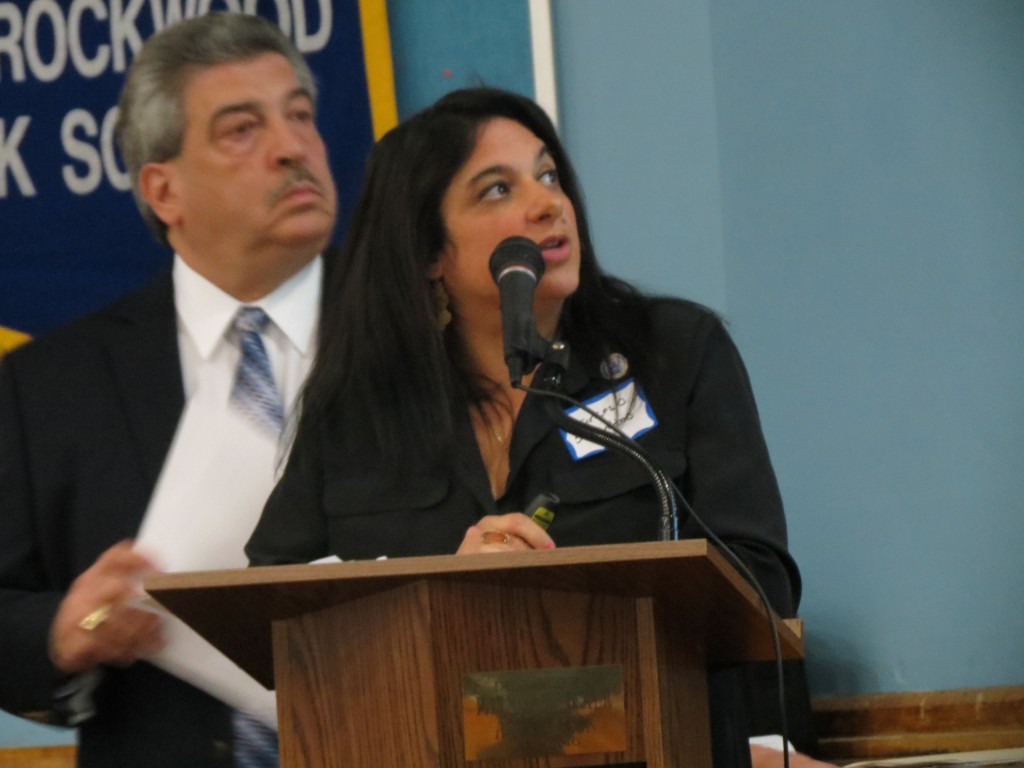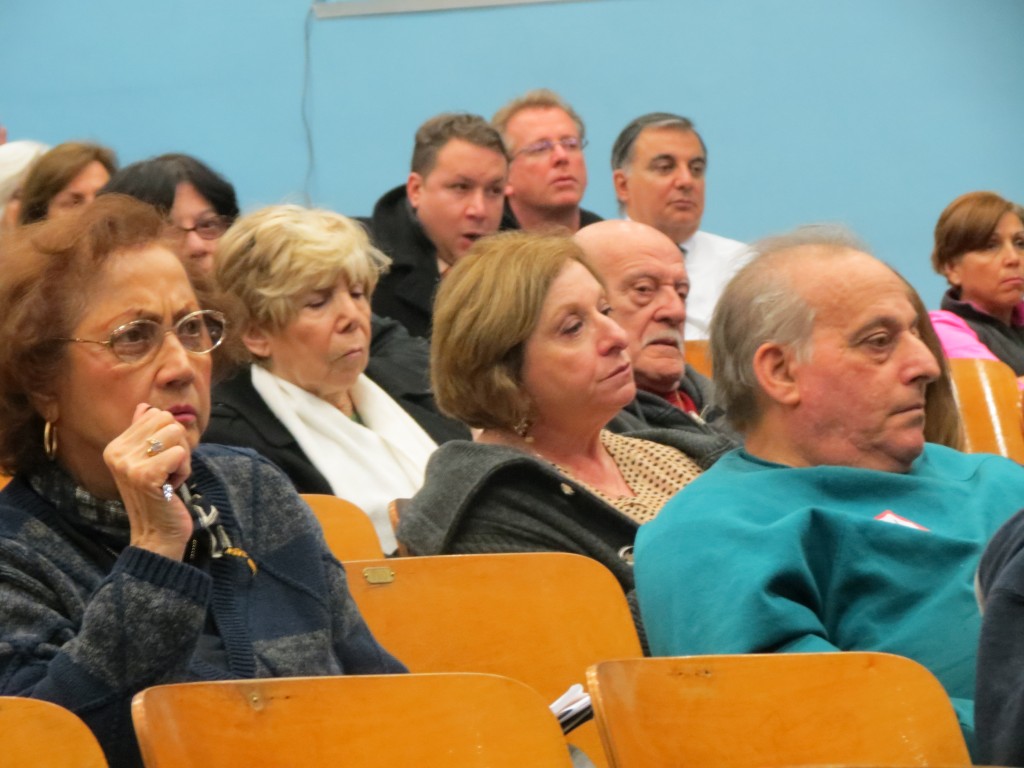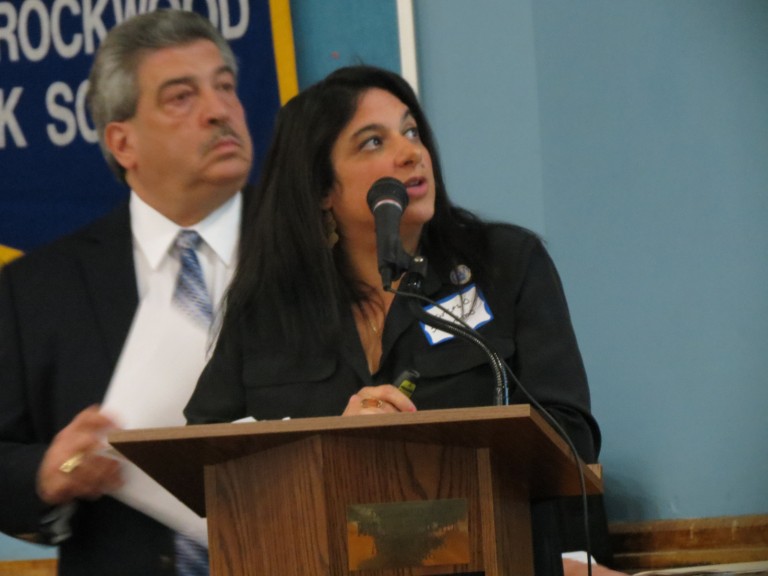
Co-chairs of Howard Beach’s New York Rising Community Reconstruction Program committee John Calcagnile and Frances Scarantino at PS 207 Monday night. Anna Gustafson/The Forum Newsgroup
Settling into the slightly creaky wooden seats lining the auditorium of Howard Beach’s PS 207, South Queens residents spent hours Monday night absorbing colorful maps and lists of demographics in an effort to craft a plan that, by doing everything from raising street levels to better protecting vulnerable coastline, translates into residents never again facing the kind of damage wrought by Hurricane Sandy.
“We are building back – stronger, smarter,” Frances Scarantino, co-chair of Howard Beach’s New York Rising Community Reconstruction Program, said at the group’s Monday meeting that drew people from throughout the neighborhood.
More than 60 residents gathered for the meeting of Gov. Cuomo’s New York Rising program that will give communities across the state, including Howard Beach and Broad Channel, funding to create and at least partially implement a plan that aims to protect areas from devastating natural disasters – like Sandy. Howard Beach is slated to receive at least $18.3 million from the state as part of the program, and the neighborhood’s New York Rising committee has been meeting since the summer to come up with ideas that could result in flooding relief, among other things, for residents who have seen enough water in the past year to last a lifetime.

Numerous South Queens residents gathered to discuss plans that could better protect the community during natural disasters.
The committee’s second public meeting, Monday night was an effort to disperse information that the all-volunteer committee has created with the help of input from other area residents and consultants partnering with the state, as well as land more feedback from area individuals.
John Calcagnile, an architect from Howard Beach and a committee co-chair, began the evening’s discussion with a focus on developing a strategy to protect area power stations so residents will not have to face weeks without powers, as they did after last year’s hurricane.
There are three substations in Howard Beach, at least two of which were taken out by floodwaters – and all three now sit within the high-risk zone in the area.
Frank Lombardi, a civil engineer and committee member, stressed that permanent storm surge barriers must be erected. During Sandy, Howard Beach was hit with a storm surge of about 12 feet – while other areas in the city faced a surge of up to 16 feet.
Lombardi noted that, “if we, as a regional community, want to prevent, instead of accommodating, this peak storm surge in the future, we need to build barriers high enough to protect coastal communities, without placing adjacent neighborhoods in harm’s way from displaced waters.”
A 77-year resident of Hamilton Beach, committee member John Fazio stressed that access to isolated sections of the community – particularly his neck of the woods – needs to be increased. Additionally, he said streets should be raised in the area.
“Even during a normal moon tide, we get 6 to 8 inches of water – that’s ridiculous,” Fazio said.
The area’s vulnerable populations – such as seniors or the disabled – must be better accounted for during disasters, Community Board 10 Chairwoman Betty Braton, also a committee members, emphasized.
“Knowing where people were and what people needed was difficult in Sandy,” Braton said.
Another major problem during Sandy was a lack of information about everything from where to get food to locating loved ones – and Scarantino said this must change in the next disaster.
“We should create a central location that could have heat, food, clothes, electricity, gas, and information,” she said.
For more information about New York Rising, visit www.stormrecovery.ny.gov/community-reconstruction-program.
By Anna Gustafson

